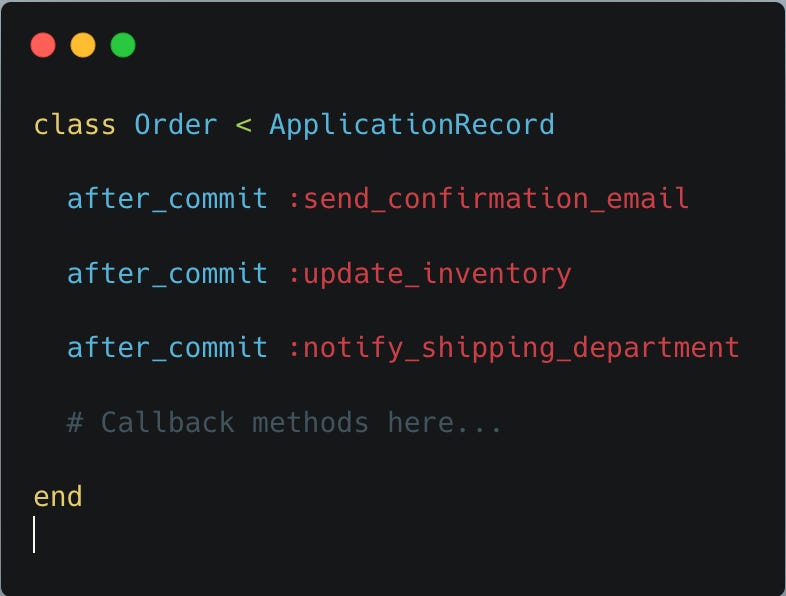In this issue, I'll take you through the dark side of Rails callbacks and how to escape their clutches.
🚀 What you'll learn:
Why callbacks are often a code smell in Rails applications
How to identify problematic callback patterns
Practical alternatives like Service Objects
Best practices for when callbacks are unavoidable
The Problem
What starts as a simple, elegant model often transforms into a maze of invisible actions and unexpected side effects. Callbacks seem convenient at first, but quickly introduce complexity that's hard to reason about.
Here's what we were dealing with:
💡 Warning Signs:
Business logic hidden within model callbacks
Multiple responsibilities crammed into a single model
Unexpected behaviors triggered by simple save operations
Difficulty testing methods in isolation
Increasing complexity when special cases arise
From Problem to Solution
Step 1: Identify and Extract Business Logic
Before:
After:
🎯 Impact:
Explicit control flow makes the code more predictable
Each operation can be triggered independently when needed
Testing becomes simpler with clearly defined boundaries
Failures can be handled appropriately at each step
Step 2: Replace Callbacks with Service Objects
Before:
After:
The Aha Moment
The breakthrough came when we realized that models should focus on their data, not on every action that might occur when that data changes. By separating concerns and making operations explicit, we gained control over our application flow.
Real Numbers From This Experience
Before: 47 callbacks across 12 models
After: 8 essential callbacks, 15 service objects
Test suite: 30% faster execution
Debugging time: Reduced by approximately 40%
The Final Result
🎉 Key Improvements:
Clear separation of responsibilities
Explicit control flow instead of hidden magic
Easier testing and debugging
Simplified reasoning about application behavior
Straightforward error handling
More modular and maintainable code
Monday Morning Action Items
1. Quick Wins (5-Minute Changes)
- Identify models with more than 3 callbacks
- Comment on what each callback is doing
- Flag any callbacks that trigger external services or emails
2. Next Steps
- Create a service object for your most complex model operation
- Move non-data-related callbacks to this service
- Update controller actions to use the service explicitly
- Update tests to reflect the new architecture
Your Turn!
The Rails Callback Challenge
Take a look at this code. How would you refactor it?
💬 Discussion Prompts:
- Which of these callbacks are most problematic?
- How would you reorganize this code using service objects?
- Are there any callbacks that might be acceptable to keep in the model?
🔧 Useful Resources:
- Rails Guides: Active Record Callbacks
- Crafting Ruby Service Objects
- Ruby on Rails Callbacks by Thoughtbot
Found this useful? Share it with a fellow developer! And don't forget to reply with your own callback horror stories or refactoring wins.
Happy coding!
Pro Tip: When refactoring existing callbacks, move one at a time and ensure your test coverage before and after the change.
Remember: Models should focus on what they are, not what they do. Actions belong in services, data belongs in models.









